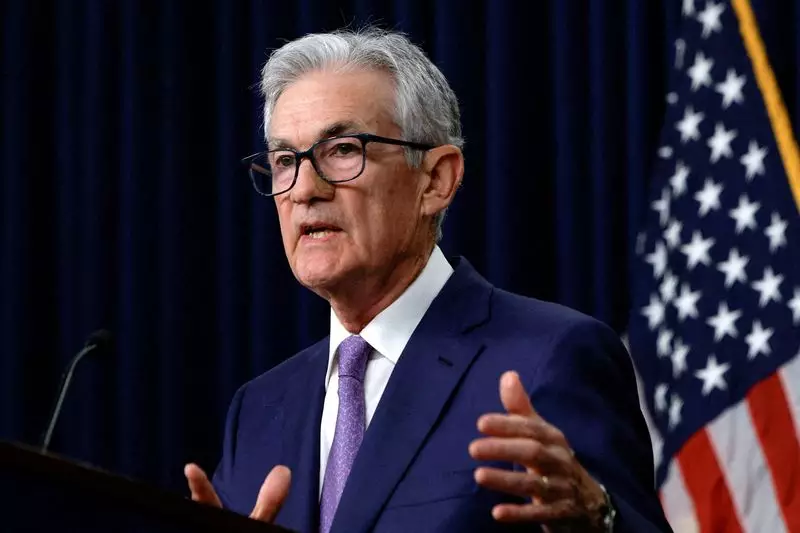The dynamics of economic policy often dance in tandem with the political movements of the day. In the wake of significant political elections, particularly in the United States, the decisions made by the Federal Reserve (Fed) can pivot dramatically in response to new leadership. Following the Federal Reserve’s recent announcement to lower interest rates by 25 basis points, discussions led by Chair Jerome Powell raised the pertinent issue of how incoming administration policies could influence future monetary policy decisions. This article delves deeper into the interrelation between political imperatives and economic strategy as perceived within the framework of the Fed’s operations.
In a press conference, Powell articulated that the Federal Reserve would maintain a cautious stance, asserting that the prospective economic policies characteristic of the incoming Trump administration would not reshape their “near term” strategies. While he recognized Trump’s agenda—entailing tax cuts and stringent tariffs—could eventually come into consideration, he stressed that the immediate ramifications of such policies would need time to materialize. This prudence is indicative of the Fed’s orthodox approach, where actions are guided by empirical data rather than speculation.
What is particularly notable is the historical precedent Powell draws on, referencing the Fed’s response post-2016 elections when Trump first entered the White House. Historical analysis often serves as a roadmap for navigating future uncertainties. In December 2016, discussions within the Fed mirrored sentiments seen currently, with members contemplating the effects of anticipated fiscal policies on interest rates. Even then, there was a palpable mix of optimism regarding potential economic expansion coupled with uncertainty about the specificity and timing of such policies.
Analyzing Powell’s remarks reveals that Fed officials, despite existing uncertainties, began incorporating projections based on possible policy shifts from Trump’s administration. This initial reluctance reflects a broader hesitance by monetary authorities to overreact to political changes without definitive data substantiating a potential economic upturn. Policymakers are keenly aware that transition periods bring about volatility, a sentiment echoed in reports by economists who signal that Trump’s import strategies may instigate inflationary pressures. Such developments could arguably force the Fed to maintain higher interest rates longer than they might prefer under non-volatile circumstances.
Moreover, potential tensions between the Fed and the Trump administration become apparent as these monetary policies navigate the rocky waters of political ambition. Increased rates can temper economic growth, a reality that might not align with a new administration eager to stimulate the economy through fiscal measures. The juxtaposition of these two powers raises important questions about the independence of the Fed and its capacity to execute its objectives without external pressures.
The uncertainty surrounding how Trump might interact with the Fed has introduced additional complexities into this dialogue. Powell’s firm stance against resignation amid potential political maneuvering reveals a commitment to uphold the independence of the Federal Reserve. This independence is paramount for the Fed’s credibility and ability to foster economic stability. Consequently, any aggressive attempts by the administration to sideline or remove Powell could precipitate legal challenges, further complicating the relationship between fiscal and monetary authorities.
Trump’s mixed signals regarding Powell—indicating he may allow him to continue but simultaneously leaving the door open for change—complicate the forecast for the Fed’s future trajectory. This dynamic demonstrates the fragility inherent in the current economic situation, with potential for disruptive shifts if the administration decides to intervene more deeply in Federal Reserve affairs.
Ultimately, the symbiotic relationship between political and economic spheres necessitates a careful balancing act. As outlined, the Federal Reserve must navigate through the complexities of political transitions while remaining committed to its mandate of maintaining stable prices and maximizing employment. The road ahead is characterized by uncertainty, requiring vigilance as the new administration’s fiscal direction becomes clearer.
The interplay between the Fed’s interest rate decisions and the incoming Trump administration’s policies will be critical in shaping not only the immediate economic landscape but also the broader financial stability of the country. As analysts and policymakers reflect on past experiences, their lessons will be pivotal in determining future strategies that can help navigate this uncertain and potentially tumultuous economic terrain.

